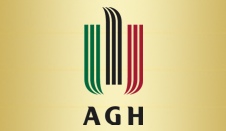Contextual generalizing of robot control step sequences using associative neural graphs
INVITED TALK
Autorzy/Authors: Adrian Horzyk
Wydawnictwo/Publisher: BIT's International Congress WCR 2015 w Shenyang, China, and the 14-th China International Equipment Manufacturing Exposition, 2015-08-30 - 2015-09-02.
Abstract:
Today, machine learning is not enough to get human-like knowledge representation and intelligence. Many mathematical models used today are biologically not plausible. They differ in modeling of biological neurons, adaptation methods and structures. They do not achieve many known abilities of human brains. If we want to be able to process data in a brain-like way, we have to go further in understanding of neural processes that take place in biological brains and model them properly. One of the most important aspect of biological data processing is its ability to react on complex situations very fast even though biological neurons do not fire so frequently as clock speed of modern processors is. Moreover, generalization of contemporary machine learning methods is limited to training vectors and some clustering or classification abilities. These methods do not allow us to automatically draw conclusions or summaries. Our brains enable us to efficiently aggregate big data, which every day influence on our minds, and consolidate their sequences, rules, and algorithms to draw conclusions and construct new solutions on their basis. A very important aspect of our thinking processes is the ability to automatically associate data, their groups, and sequences. The association and aggregation of data allow for contextual processing and recalling of other associated data in a context of a question or another statement. Associative neural graphs allow neurons to aggregate and associate data, their groups, and consolidate their sequences. They can be used to summarize or generalize about training sequences, rules or even algorithms to control robots.
ASAP project fair:
Novelty fast neuro-associative methods of artificial intelligence for classification tasks, control, data mining, and knowledge engineering.

